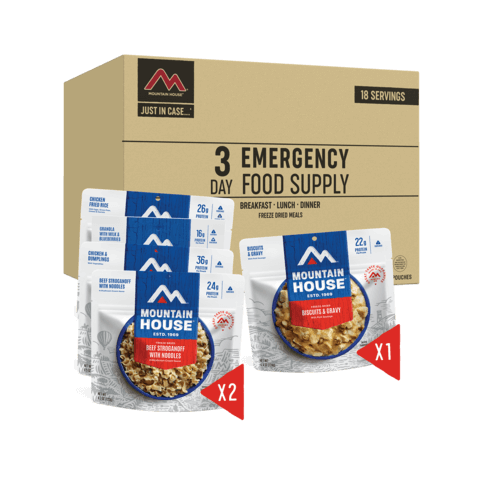Inspired for an Adventure? Check out Beef Stroganoff - Pouch and Beef Stew - Pouch
Free Ground Shipping On All Orders
Over 2,100 Reviews
Add description, images, menus and links to your mega menu
A column with no settings can be used as a spacer
Link to your collections, sales and even external links
Add up to five columns
Add description, images, menus and links to your mega menu
A column with no settings can be used as a spacer
Link to your collections, sales and even external links
Add up to five columns
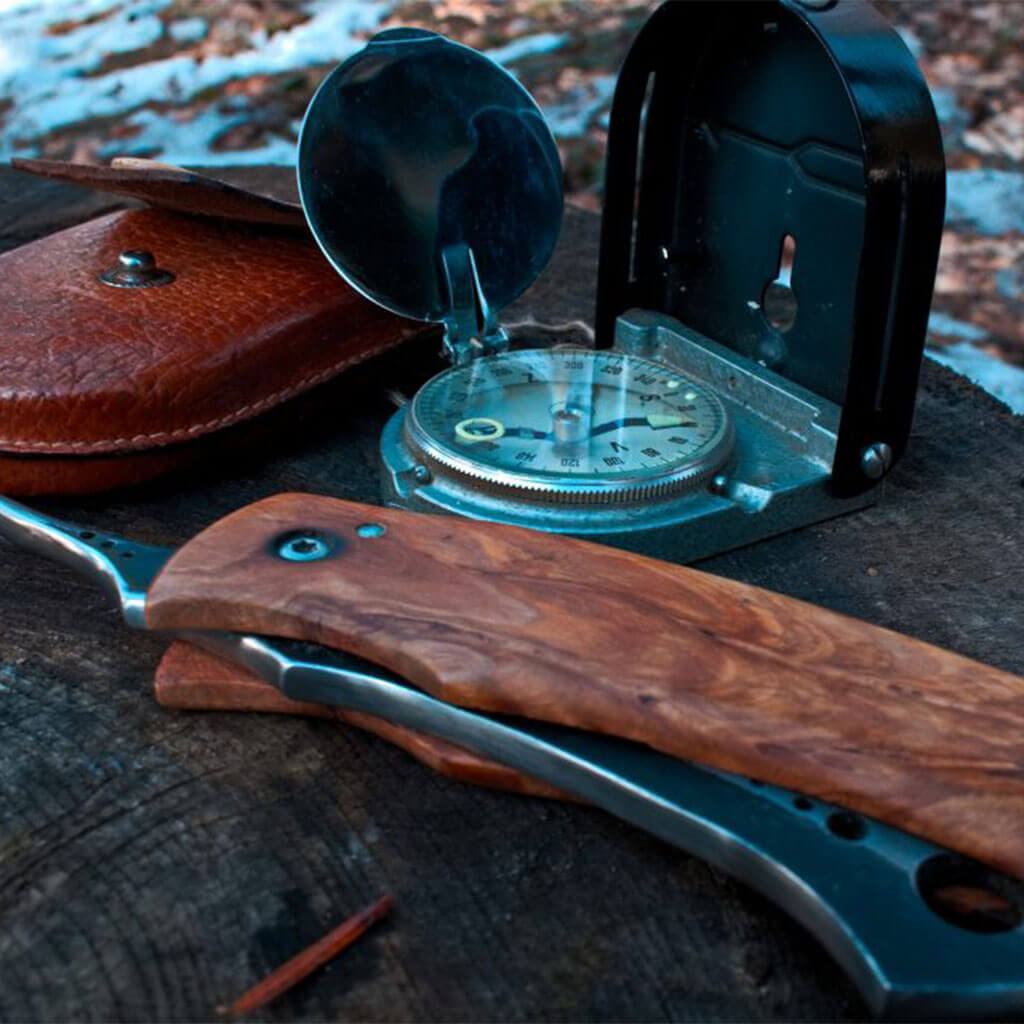

Winter serves up frosted-over beauty, for sure, but also plenty of risks. The season doesn’t look kindly upon outdoors people who come to it unprepared or disrespectful of its rigors, and a survival situation this time of year can turn deadly mighty quickly. Here are some basic winter survival tips on how to survive in the woods. Be prepared before venturing out into the white stuff!
In this article, we’ll cover:
- The Basics of Winter Survival
- Winter Survival Shelter
- Situating Your Shelter
- Making a Fire
- Clothing Tips
- Food & Water
- Avalanche Safety
- Stranded in a Vehicle
- Winter Survival Emergency Kit
The Basics of Winter Survival
Whether you’re lost on foot in the frozen outback or stuck in a car on a snowed-in road, the essential elements cold-weather survival are the same. You need to stay warm and dry, which means finding or making a shelter and creating a heat source. These need to be your first priorities, as you have to create an environment in which you can hunker down till help arrives or conditions allow you to get to safety. Frostbite and hypothermia can set in quickly if you don’t.
Staying alive in the winter wilds also means eating and drinking regularly to maintain your energy stores and regulate your body temperature.
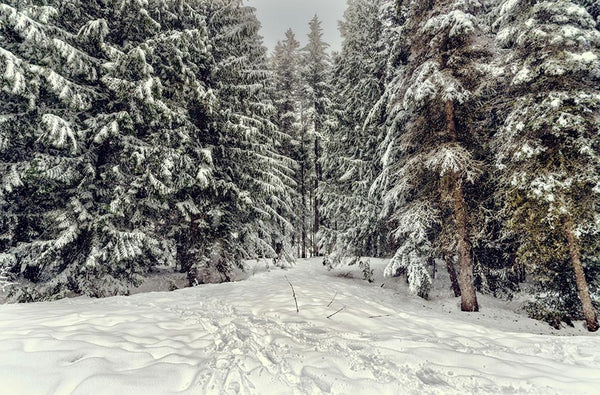
Winter Survival Shelter
If you’re a winter recreationist, you’ll want a four-season/mountaineering tent. You can get by with a three-season tent in some climates and during shoulder seasons, but skiers, snowshoers, climbers, and other trekkers out and about in the depths of winter need a stronger, better-insulated shelter up for the demands of severe temperatures and biting winds.
Make your tent platform as flat as possible by stomping and grading it with snowshoes, skis, or whatever other tools you have at hand. If you simply plop your tent down on raw snow, you won’t just be dealing with annoying slopes or lumpiness: Your sleeping position will become cast rock-hard into the icy surface, which makes for highly uncomfortable sleeping over multiple nights. Secure a tent’s guylines with deadmen anchors: stakes, branches, rocks, or other items buried in snow.
In their tried-and-true classic Mountaineering: The Freedom of the Hills, the Mountaineers organization suggests digging a foot-deep pit in front of your tent door and within the vestibule for the purposes of comfortably putting on and taking off boots as well as cooking within during inclement weather.
If you’re caught in an emergency situation without a tent, you’ll need to build your own shelter. One of the easiest and quickest techniques is to make a snow wall: The United States Marine Corps recommends building a horseshoe-shaped rampart at least three feet high, the open end facing downwind. You can reinforce the wall with branches or ski/trekking poles, and roof it with a tarp or poncho.
Other options include snow caves (which any mountaineer, in particular, should know how to construct), igloos, fallen-tree bivouacs, and snow trenches.

Situating Your Shelter
To improve your chances of survival in the woods in an emergency situation, you’ve got to gauge the lay of the land to effectively site your winter shelter. Don’t pitch your tent or build your snow shelter at the bottom or mouth of a valley, canyon, or ravine, as cold air tends to spill down these terrain features. Avoid setting up shop in places exposed to prevailing winds or avalanches. If you’re jury-rigging your own emergency shelter, take advantage of natural aids when you can: caves, fallen trees, etc. Just make sure your shelter’s well ventilated and secured against collapse.
Making a Fire
Fire-starting materials should be a part of your emergency outdoor supplies at any time of year. In a waterproof container, pack tinder—for instance, a plug of dryer lint, or little strips of rolled-up newspaper bound by rubber bands—as well as several means of sparking flame: matches, lighter, and a flint and striker.
Natural sources of tinder include dried moss and leaf litter, reserves of which you can sometimes find sheltered under the low-hanging boughs of a densely branched evergreen. Around a generous heap of tinder, build a teepee of small twigs and then kindling of small branches. Light the tinder and gently but steadily blow into it to build up the flames. Add larger wood once the kindling catches.
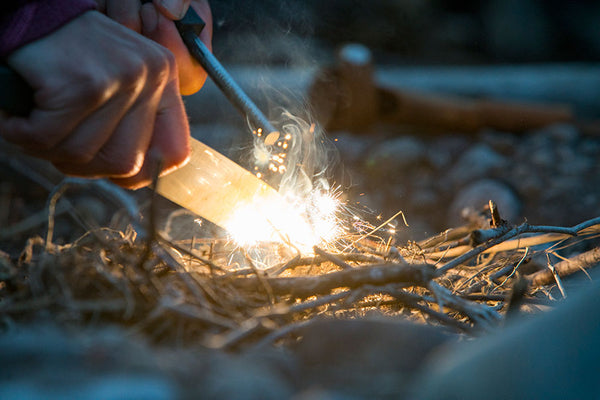
Your Winter Wardrobe: Clothing & How to Manage It in a Winter Survival Situation
Headed into the winter wilderness, you want to be properly layered: long underwear of polyester or merino wool as a baselayer, fleece over that, and then a waterproof and windproof shell. Wear wool socks, a neck gaiter, and a hat; pack a balaclava so you can protect your face against frostbite if temperatures really drop or winds kick up.
If you’re hanging out at camp or stopping along the trail, bundle up: Put a puffy jacket at the top of your pack so you can easily pull it on. If you’re traveling, strip to your midlayer or baselayer to avoid working up too much of a sweat: Drenched in perspiration, you’re vulnerable to hypothermia. Cut down on sweat and evaporative cooling by putting a vapor barrier—say, a plastic bag—over your socks.
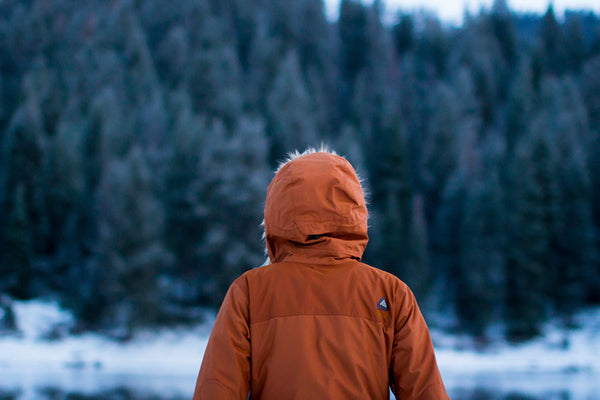
Food & Water
Breaking trail, erecting shelters, gathering firewood: You plow through a lot of energy carrying out the tasks of cold-weather survival, let alone simply staying warm. Reach for those energy-rich snacks frequently: nuts, cheese, salami, chocolate, and the like. Given fats pack twice as many calories per gram as carbs or protein, they make primo winter-camping snack food.
To conserve fuel and minimize cooking time out in the cold, meanwhile, make delicious, just-add-hot-water Mountain House entrees your fortifying meals.
Dehydration’s a sneaky threat during winter survival camping. Melting snow’s a go-to option for obtaining drinking water, but if you can find ice that’s a better source, given its higher moisture content. Remember to boil or otherwise disinfect that snow or ice meltwater before using it for drinking or cooking. Besides using a cooking container over a stove or campfire, you can also melt snow or ice by packing it within a t-shirt or plastic bag, tying that parcel to a tripod of branches near a campfire, and placing a container underneath to collect the drips.
If you can find open water, that’s all the better: You don’t have to waste fuel or time melting snow and ice. Be careful fetching it, though, from a creek or river, as streamside snow may hide fragile ice or current.
If you’ll be spending several nights in a campsite—as you probably will be during a survival situation—consider establishing a protected camp kitchen for preparing meals and water in the lee of a snow wall built against the prevailing wind.
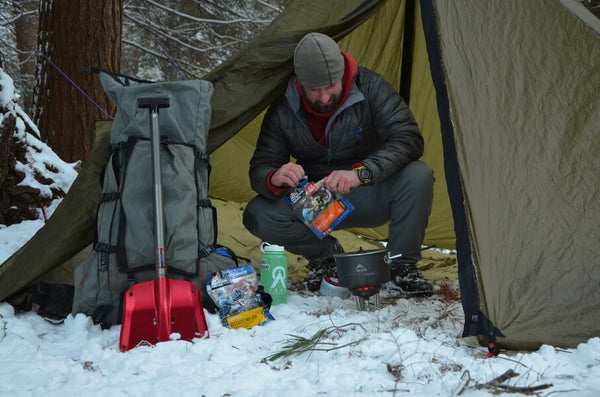
A Few Tidbits on Backcountry Travel in the Winter
Avalanche safety demands its own in-depth treatment for which we don’t have the space in this blogpost. It’s vital to familiarize yourself with the basics of traveling through avalanche country, as these snowslides can be a mortal threat on surprisingly shallow slopes. (The National Avalanche Center provides online resources well worth checking out.)
In snow-draped landscapes, ridgelines and windward hillsides may provide easier passage than leeward slopes and valley bottoms, which tend to accumulate deep snow.

Winter Survival If You’re Stranded in a Vehicle
Many a winter-survival situation doesn’t play out on foot in the white wilderness, but in your car along a snowbound roadway. Your vehicle can be stranded anywhere, after all, including right on the Interstate. Let’s say, though, that you find yourself stuck in a blizzard on a remote road (for instance, one you’re taking to a cross-country ski or snowshoe trailhead). What do you do?
The most important piece of advice is: Stay with your car! You have a much better chance of being rescued if you do, for one thing, and the vehicle also serves as a readymade shelter.
Tie brightly colored cloth to your car’s antennae to make it easier for rescuers to find you. At night, keep the dome light on for the same reason.
To stay warm but conserve gas, run the engine for 10 minutes every hour or so. While it’s going, the Federal Emergency Management Agency recommends cracking a downwind window for ventilation. It’s vital to regularly check on your exhaust pipe to make sure it’s cleared of snow; otherwise, you risk poisoning yourself with carbon monoxide.
Stay bundled up, using the extra clothing and blankets in your vehicle survival kit (see below). Floormats and seat covers can provide a little bit of extra insulation in extremely cold conditions.
Stomp out “S.O.S.” or “HELP” or form the words with tree boughs in the snow nearby in a place visible from above.
Before a winter roadtrip, make sure your vehicle’s in good running order and stocked with emergency supplies (both automotive and survival), and—as always—share your itinerary and route so that others back home have a sense of where you might be in case you do get stranded. (That, of course, goes for a skiing, snowshoeing, or backpacking trek as well.)
Winter Survival Emergency Kit
In your vehicle and in your pack, you should have the essentials of wilderness survival on hand at all times in case you run into a sticky—err, snowy—situation. Besides the fire-making materials we discussed above, your emergency supplies should include extra food supplies (such as one of our handy Just In Case…® Emergency Food Supply kits), headlamps and flashlights with extra batteries, signaling devices (such as a mirror and a whistle), and a first-aid kit.
How to Survive in the Woods
- Build an emergency kit
- Notify someone before leaving
- Locate a safe area
- Find or make a shelter
- Make a fire
- Properly utilize layered clothing
- Find a source of water
- Purify water
- Eat and drink regularly
- Watch for avalanche risks
- Signal for help in snow banks
- Stay in your car if possible
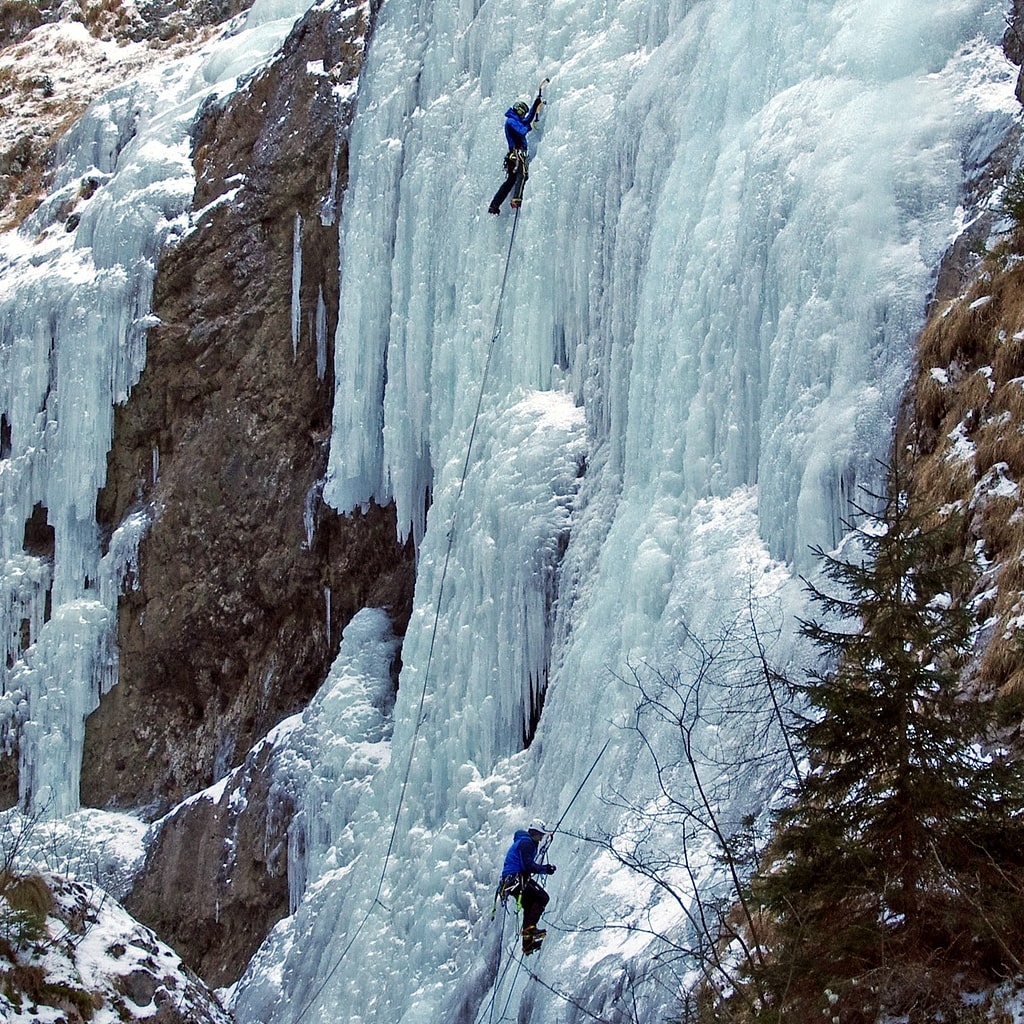
A Beginner’s Ice-Climbing Guide: How to Get Started
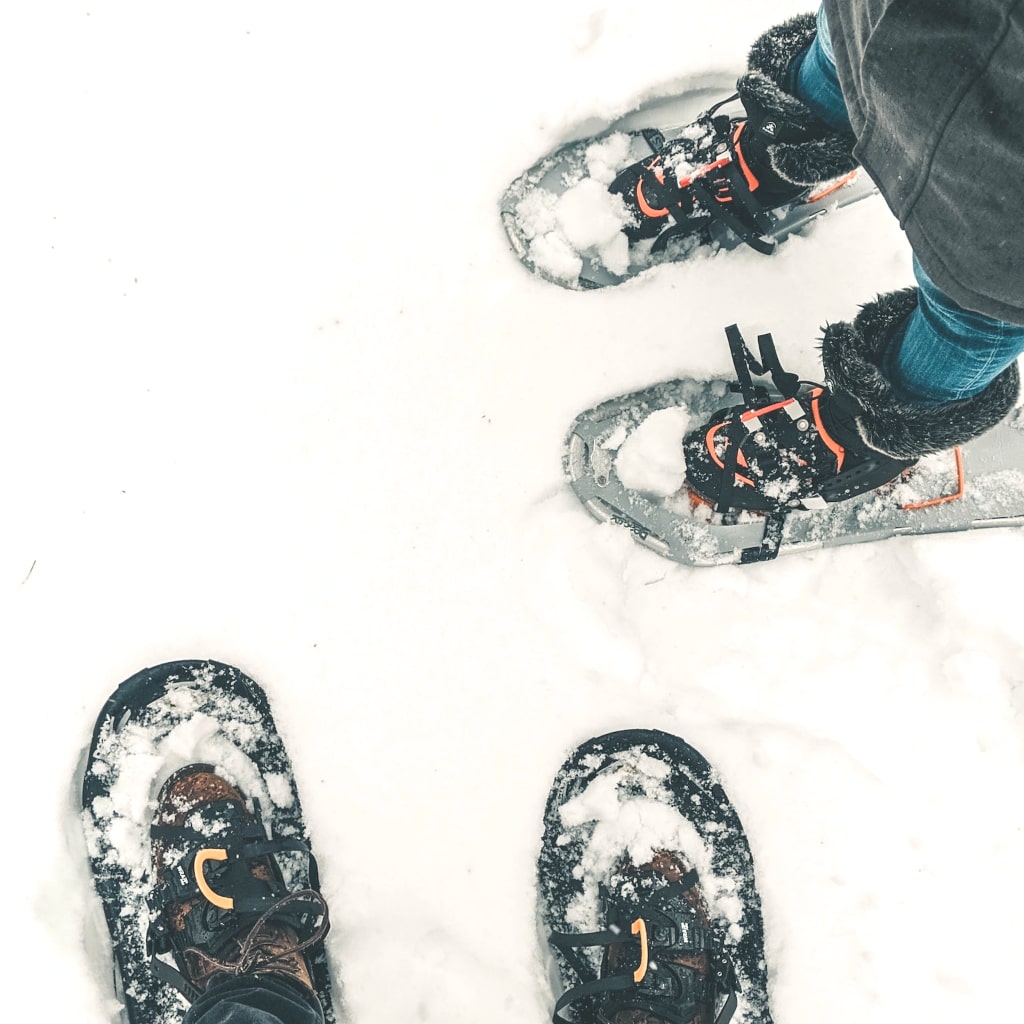
15 Best Places To Go Snowshoeing in North America This Winter


Stay Hungry for Adventure
Sign Up for Delicious Outdoor Meals & Exclusive Offers!
By clicking ‘Join Now’, I agree to the Terms of Service and Privacy Policy.


Join the adventure
©2025 Mountain House — All Rights Reserved.
Your Cart is Empty
Continue ShoppingYour Cart
Subtotal
$0.00
EXPRESS PAYMENT METHODS AVAILABLE IN CHECKOUT
Taxes and Shipping Calculated at Checkout
Your ExpertVoice deal.
$[Deal Price]
$[Original Price]
Discount applied at checkout.
On sale now — lower than your ExpertVoice discount.
Not eligible for ExpertVoice discount.















